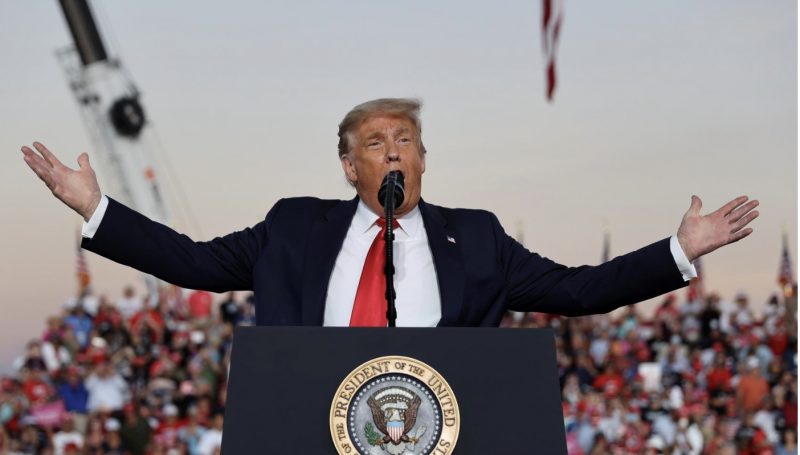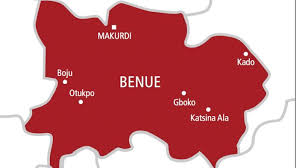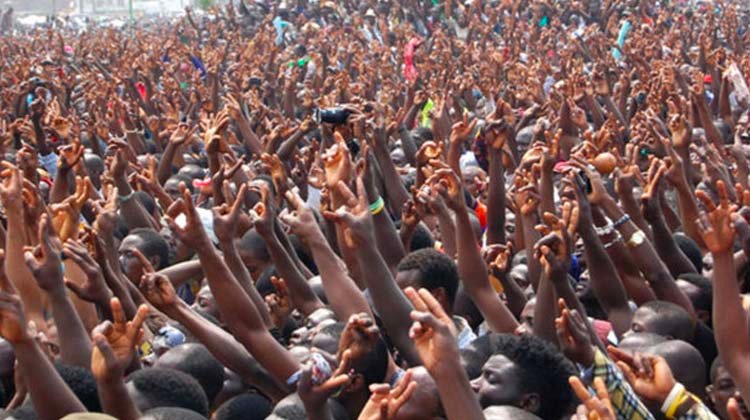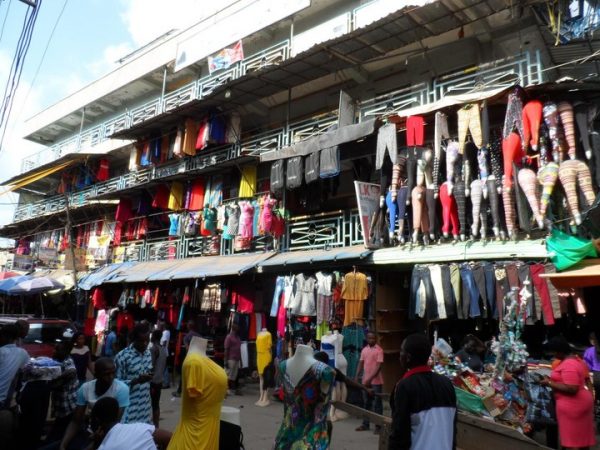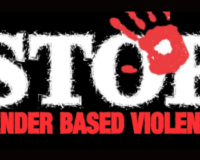While speaking at the Edo transition committee stakeholders engagement last week, Godwin Obaseki, governor of the state, said Nigeria is in huge financial trouble, adding that the federal government printed N60 billion as part of federal allocation for March.
The governor expressed worry that the country has continued to borrow despite unclear means of refunding payments.
“So we have run a very strange economy and strange presidential system where the local, state and federal government, at the end of the month, go and earn salary. We are the only country in the world that does that,” he had said.
“When we got FAAC for March, the federal government printed additional N50-N60 billion to top up for us to share.”
In a delayed reaction, Zainab Ahmed, minister of finance, budget and national planning, dismissed the claim by Obaseki as false, saying Nigeria’s debt is still within sustainable limit and efforts are on to improve revenue generation capacity.
However, Obaseki maintained his ground asking the federal government to end the current monetary rascality and stop “playing the ostrich” so as to prevent the economy from further degenerating.
EMEFIELE: IT’S DONE IN OTHER CLIMES
When Godwin Emefiele, governor of the Central Bank of Nigeria (CBN) addressed the issue, he described Obaseki’s claim as a political ploy that is “unfortunate and totally inappropriate”. Emefiele added that central banks of other countries facing similar economic crisis print money, as Nigeria does, to support their government.
“If you understand the concept of printing of money, it is about lending money. There is no need for all the controversy around money printing as if we are going into the factory to print naira and then distribute on the streets,” the CBN governor said.
“Most countries of the world today are confronted by not just the health crisis from the COVID pandemic but also economic crisis. I keep saying this: it would be irresponsible of the central bank of Nigeria or any central bank to stand idle and refuse to support its government at this time. Whatever we do in Nigeria is being done in any clime.”
It must be noted, though, that Emefiele was speaking in general terms about money printing as a function of the CBN. It was neither a confirmation or a denial of Obaseki’s claim that N60 billion was printed to augment March allocations.
VERIFYING EMEFIELE’S CLAIM
To verify Emefiele’s claims, TheCable checked the situation across some other countries of the world to see the “money printing” policy at work in those countries.
As the COVID-19 pandemic continues to wreak havoc globally, central banks have opted to print money to finance government spending — in a policy known as “helicopter money”.
Some of the policies are direct monetary financing or quantitative easing (QE). QE involves central banks printing money to buy financial assets in the open market and increase the money supply in the economy.
The CBN created about N3.5 trillion for the Nigerian government in 2020 in response to the COVID-induced economic challenges.
FIRST, WHAT IS MONEY PRINTING?
Let’s assume Nigeria printed N100 billion in 2020. Does this mean one million copies of N1,000 notes were minted and sent to banks or sent to the federal and state government to share? No. It is literally just increasing the country’s money supply — by crediting accounts of the parties concerned.
If CBN were to give the federal government N10 billion, it is simply raising a credit order. Just like it happens to the rest of us: if a friend sends you N100,000 electronically, you get an alert, not 100 leaves of N1,000 note at your doorstep.
In the 21st century, printing money could simply just mean typing money into the system. It just happens that only the apex bank can do that.
To also make it clear, countries, however, have how much money they print — literally, print at the mint — per year. But this literal printing is to change money in circulation, retrieve old notes and send out new ones — not necessarily to increase money in the economy.
WELL, UK PRINTED OVER £875 BILLION IN 2020
On April 9, 2020 the Bank of England (BoE) announced direct financing of the government’s operations through its ways and means (W&M) — the facility which enables sterling cash advances from the bank to the government.
This is in addition to the BoE agreeing to print about £200 billion in response to COVID-19 pandemic.
“HM Treasury and the Bank of England (the Bank) have agreed to extend temporarily the use of the government’s long-established Ways and Means (W&M) facility,” the bank said
“As a temporary measure, this will provide a short-term source of additional liquidity to the government if needed to smooth its cashflows and support the orderly functioning of markets, through the period of disruption from COVID-19.”
About seven months later, the Bank of England’s monetary policy committee (MPC) decided unanimously to print an additional £150 billion to buy government debts and keep lending rates low for the entire economy.
These decisions in 2020 brought the UK government’s money printing programme known as asset purchase asset purchase facility to £875 billion (including outstanding drafts from before 2020). BoE indeed stepped up in 2020 to help the government and the economy with this policy.
AND THE US PRINTED MORE THAN $3 TRILLION IN 2020
In 2020, the central bank of the United States was reported to have started printing money to save the American economy from the COVID-19 crisis.
The US had printed around $3 trillion and pumped it into the economy by October 2020, which means almost one in five dollars in circulation was created in 2020. This also shows that nearly 20 percent of all US dollars were created in 2020.
At the end of 2020, the US Federal Reserve was projected to have purchased about $3.5 trillion in assets with newly created dollars. Some suggest the actual number could be higher.
Just like the Bank of England in the UK, the Federal Reserve of the US bought lots of bonds by creating money to keep interest rates and inflation as low as possible.
WOW, EUROPE’S MONEY-PRINTING PROGRAMME GULPED €1.85 TRILLION
In 2020, the European Central Bank (ECB) began a money-printing quantitative easing initiative as part of its stimulus measures to respond to the pandemic.
The bank made a historic move in its pandemic emergency purchase programme (PEPP), a bond-buying scheme, which increased from €750 billion to a total of €1.850 trillion.
The bank noted it may continue the purchase till March 2022. This is expected to push down market interest rates.
Christine Lagarde, the president of the ECB and former IMF chief, had said when the PEPP hit 1.35 trillion that this was deemed to be “the appropriate size” to bring inflation “significantly closer” to its rate before the pandemic. But the bank had to do more.
As the US and UK did, the EU also employed quantitative easing methods to keep their economies afloat at the height of the pandemic in 2020.
INDIA’S ONGOING $14 BILLION BOND PURCHASE PLAN
The music is the same in India: in 2020 the Reserve Bank of India (RBI) bought over 3 trillion rupees ($44.2 billion) in bond offering just to shore up the economy and keep lending rates down.
The UK pegged its QE programme at £875 billion as the economy slowly recovered from the crisis of 2020. But that is not the case in India. The country has kept the same policy going for 2021.
Shaktikanta Das, India’s central bank governor, announced that the institution will start buying up to 1 trillion rupees ($14 billion) of bonds from April 15 as part of its QE measures to support the economy’s recovery.
In other words, India printed over $44.2 billion in 2020 and plans to print at least $14 billion starting from April 2021.
IN SOUTH AFRICA, IT’S QUANTITATIVE EASING POLICY
In Africa, like other continents of the world, the policy suite includes quantitative easing, another term for money creation.
In March 2020, the South African Reserve Bank (SARB) led by Lesetja Kganyago launched its bond-buying programme as part of its quantitative easing measure to finance the government’s growing budget deficit and ease liquidity concerns.
The bank did not state how much it planned to create. But S&P reported that the bank’s debt more than doubled between March and May 2020. This suggested that over 20 billion rands was printed.
The SARB was later reported to have printed money to buy 20.9 billion rands ($1.46 billion) worth of government bonds in the secondary market.
This is expected to keep markets moving after the negative impact of the pandemic.
GHANA TOO? YES, GHANA PRINTED $1.7 BILLION
Ghana has been one of the countries in Africa that have stayed positive as long as the pandemic has been around. They have shown some leadership on the continent and in February 2021 became the first country to receive the COVAX COVID-19 vaccine.
Economically, the Bank of Ghana has been part of the instruments that have kept Ghana going. To keep the economy afloat, the government borrowed 10 billion Ghana cedis from BOG.
This was executed by a 10-year bond worth $1.7 billion, which translates to 2.6 percent of the country’s gross domestic product.
VERDICT: It is indeed true that some countries are printing money as a result of the COVID-19 crisis and consequent economic challenges.
Credit THE CABLE


